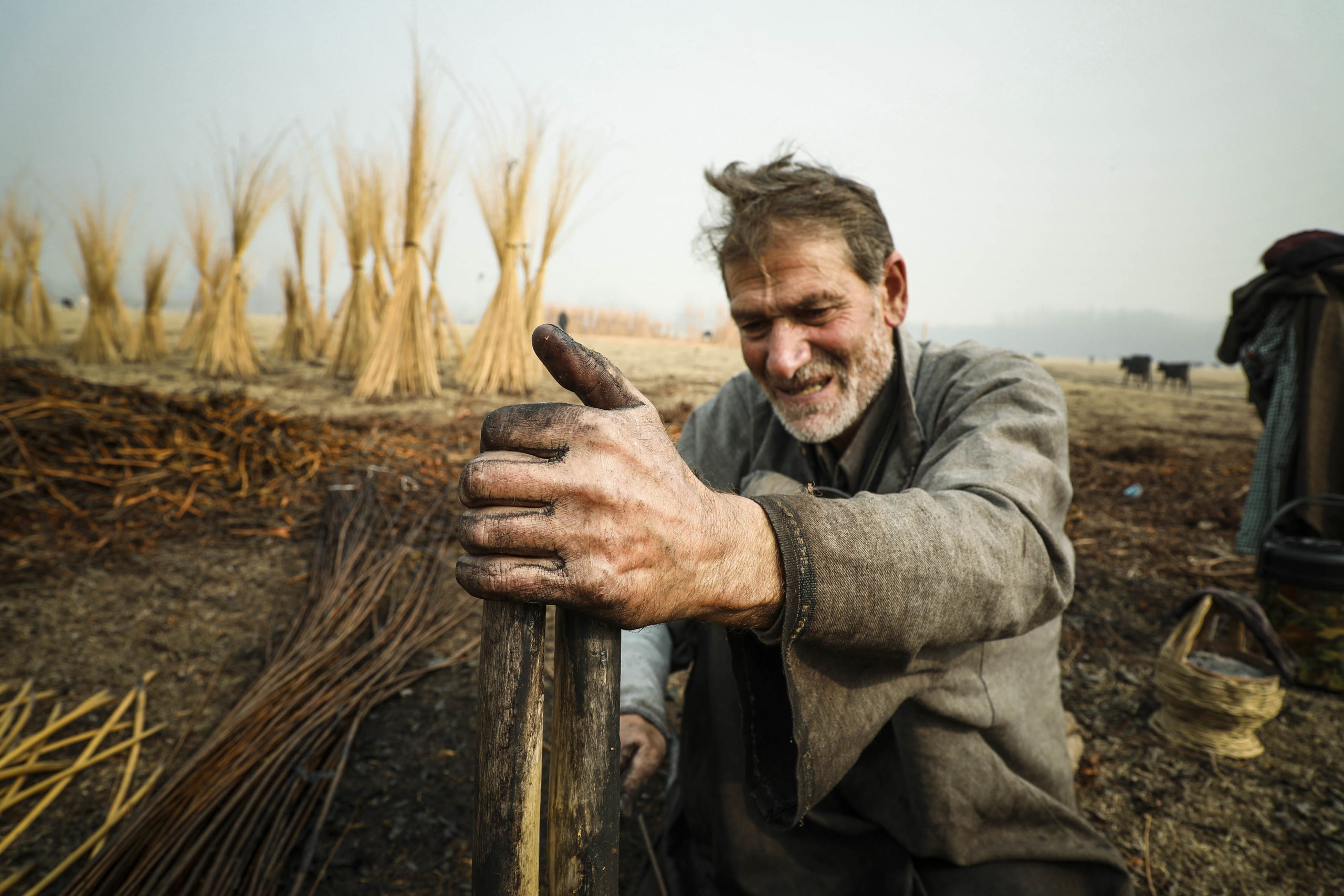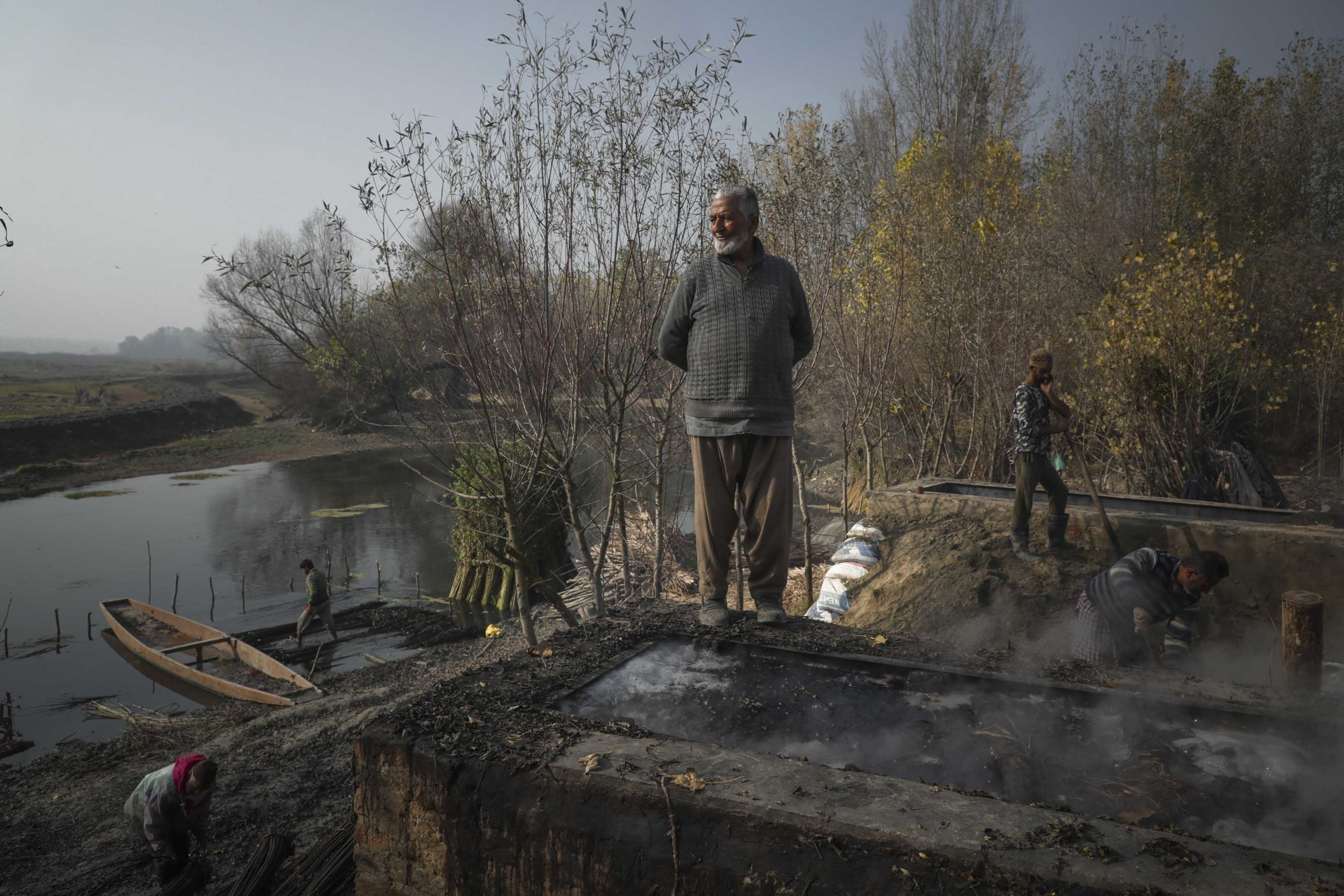Photo Essay | The dying embers of Kashmiri firepots
Creating the traditional clay and woven wicker heaters used by generations of people in the Himalayas has become associated with poverty, driving artisans from the craft.
Author:
10 December 2021

There is a saying in Kashmiri: “In the cold of winter, the night can be spent without supper but not without a kangri.”
Winters are harsh in the Himalayas. Between late December and the end of January, temperatures can plummet to as low as -20°C. To keep warm, Kashmiris wear pherans, traditional cloaks, and use the ancient kangri, a clay firepot. Kashmir faces frequent electricity cuts in winter, so the firepot provides an effective, economical and portable heater when it is filled with about 300g of hot coals. Artisans craft the earthenware pot and wicker carrier using skills passed down through generations. But now the art is slowly dying out.
To make the firepots, artisans collect wicker, which they scrape and peel before soaking, dyeing and drying. Then the dried-out wicker is woven around a bowl-shaped clay pot, which is decorated with dye, mirror work and sequins.

The eco-friendly kangri is a symbol of traditional craftsmanship, and is culturally and socially integral to the Kashmiri people. But artisans are shifting to other occupations, often preferring casual work that pays better. They have also become reluctant to pass on their skills, which are increasingly associated with poverty and a low social status.
The crafters say there is a stigma attached to this kind of work. “People in our village look down on us for being wicker peelers. They feel it is a poor family’s job,” says Abdul Samad, who has been a kangri artisan for 40 years. And their better-educated children are reluctant to take up this ancestral trade, especially after seeing their parents struggle to get a fair price for their work. Without institutional support, artisans say their ability to generate a steady, sustainable and respectable livelihood through their firepots is unsustainable.

The new generation of kangri makers express anguish over the state of affairs in their line of work. “Many in this profession are forced to quit after facing taunts and stigma,” says Shabir Ahmed. “I may ignore it, but our children take such things to heart, which forces many of us to suspend our ties with this profession.”
Kangri and the making thereof has experienced great change. The Kashmiri artisan base has shrunk from hundreds to a few families in the past three decades and artisans are living in despair. Making firepots is considered a traditional profession and artisans say this craft makes them outcasts, which discourages younger generations from joining the family occupation.
“At times I wonder what will happen to the people of Kashmir if there will be no kangri left,” says Mohammad Shaban Khanday.










